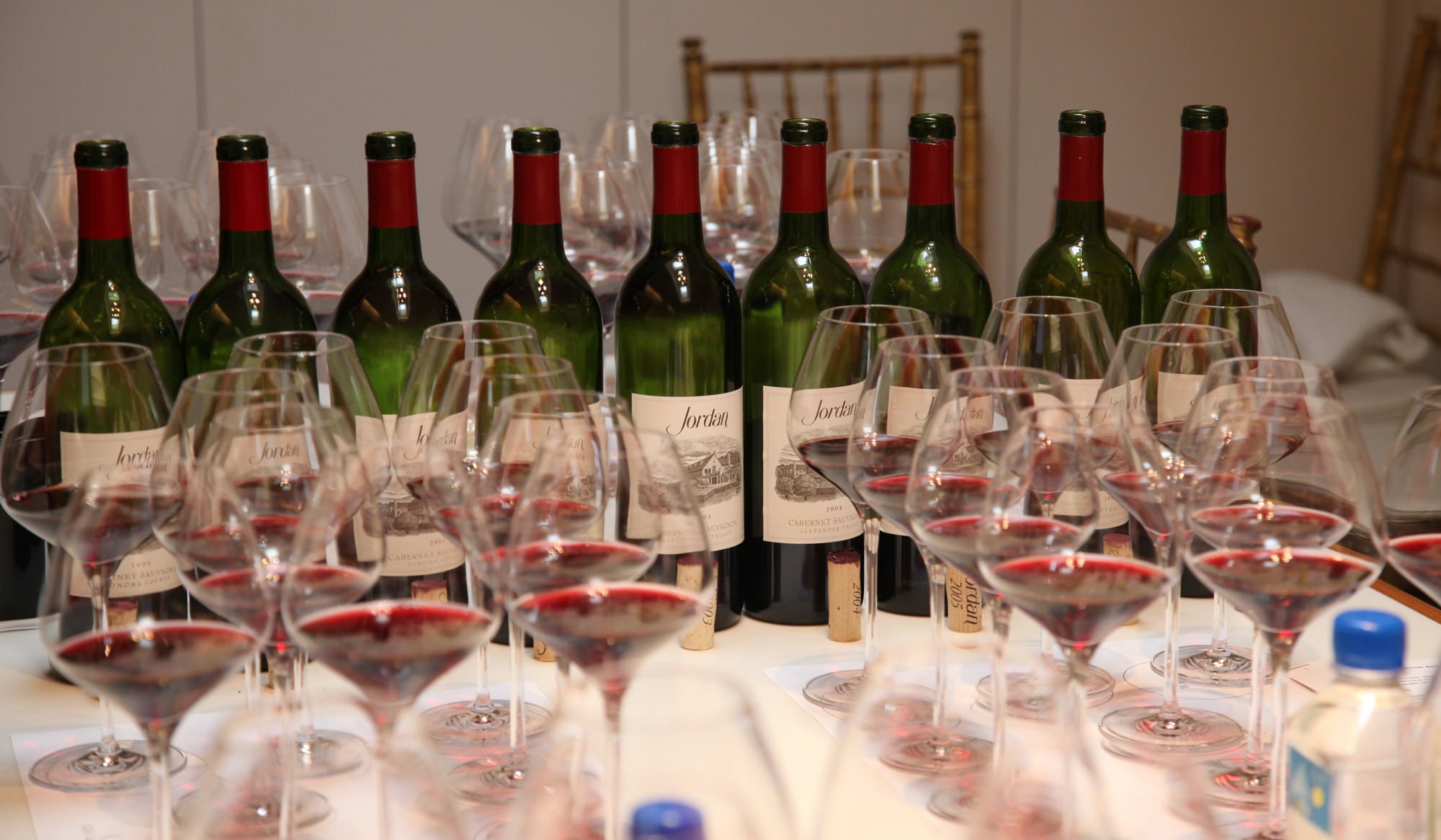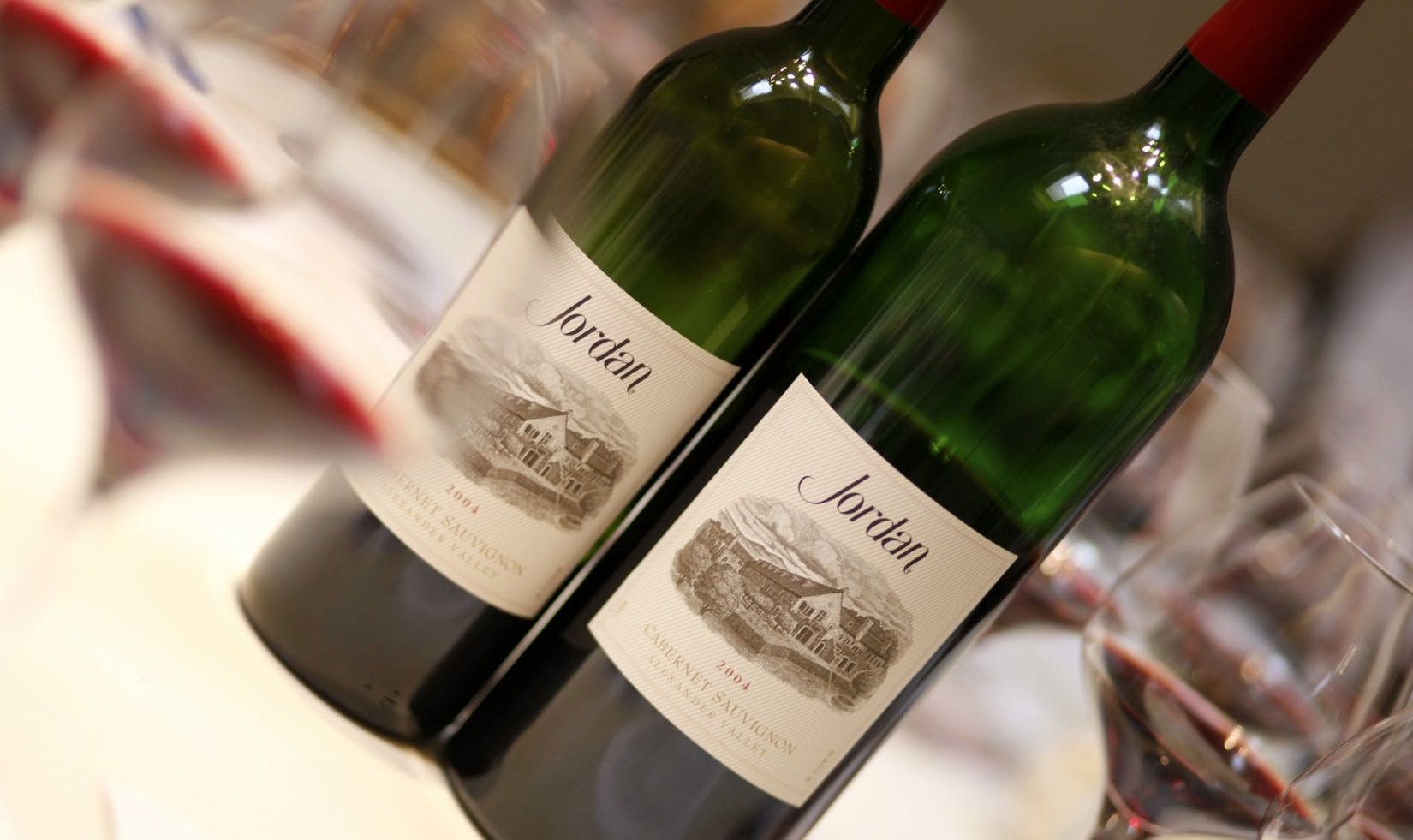Last week, we organized a tasting of nine vintages of Jordan Cabernet Sauvignon for the Guest Services team who hosts our daily tours and tastings. Because we don’t get to uncork older vintages in the library that often, this tasting was an opportunity to educate ourselves on how our library wines are evolving—and a great way for Guest Services to refresh their tasting notes. Guests often ask if a particular vintage is ready to drink or still alive, and these types of tastings help us provide our recommendations.

We’ll be releasing new When to Drink video tasting notes for all nine vintages shortly both here and on all the wine shopping pages in our new online store, so I thought we’d share our overall impressions of the tasting with you today—and highlight the most surprising and fascinating wine of the flight.
Overall, the tasting was a crowd pleaser to say the least. With the balance that our winemaking approach consistently delivers, the wines are incredibly attractive and approachable at any stage with the finesse and elegance only increasing with age.
The wine that shocked us all was the 2004 Jordan Cabernet Sauvignon. We opened two different bottles of 2004—a standard 750mL and a 1.5 liter—so we could assess the wines for differences in maturity of aromas, flavors and tannins due to the slower aging that occurs in bigger bottle formats. The 2004 Jordan Cabernet is still very much in its youthful primary stage of maturing for both the 750mL and 1.5L bottles; however, the larger format bottle is already showing promise of a deeper integration and complexity amongst the silky tannins, lively acidity and black fruit structure. Because 2004 was a challenging vintage, there have been rumblings in the past about how long it would age and how it would taste five years after its release. It’s never tasted better. Even Winemaker Rob Davis thinks this wine has really hit its stride in the last year—and shows no sign of slowing down.
We were so impressed with the wine, Guest Services decided to feature 2004 magnums in the November offering to Jordan Estate Rewards members. (If you aren’t on our mailing list, click here to receive our monthly e-newsletter.) In my opinion, magnums are great whether one prefers young or mature wines. For those that really appreciate the complexities of a more mature wine, these magnums may be an excellent addition to their cellar, as the larger bottle allows for a slower aging process to occur, ultimately delivering greater depth and complexity to both the texture and development of the secondary components. Also, the “sweet spot”–the point at which the primary and secondary components are mingling with each other in perfect harmony–will last a few years longer in the magnum. On the flip side, magnums are a good choice for those that like their wines youthful and fruity as they will remain that way longer.
My Tasting Notes for the 2004 Jordan Cabernet:
The hue of the 2004 is a beautiful garnet with medium depth intensity showing little sign of aging. The aromatics are rich with black cherry, raspberry, blueberry, plum and cassis with a forest floor backdrop. These characteristics are strengthened on the palate with round and silky tannins balanced by a vibrant acidity. It all comes together forming a soft and creamy sweet vanilla and red fruit finish lasting over a minute. This wine is currently flaunting its youthful primary fruit characteristics and will likely not hit the peak of the “sweet spot” for five years—10 years after it was released.
Seven hours after the tasting, we returned to revisit the same glasses, expecting the wines to be dead. Instead, we found that they had only improved. It was a testament to the balance and stability of Jordan wines and an eye-opening exercise about decanting recommendations. We usually suggest decanting the 2004 vintage for one hour before serving. That’s too limiting. Feel free to decant all evening. It will only get better. It’s the last vintage including Cabernet Franc in the blend, which was replanted to Petit Verdot, so definitely a slice of Jordan Cabernet Sauvignon history that is ready to be savored as our 40th anniversary draws to a close.


